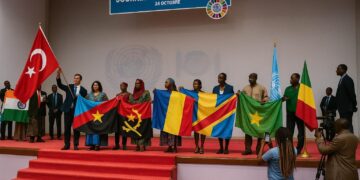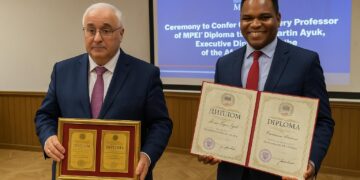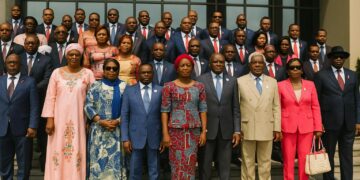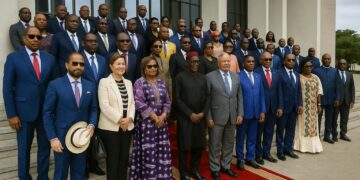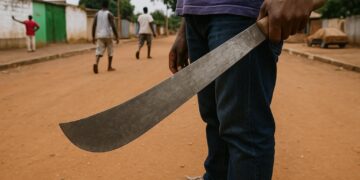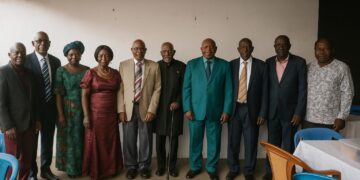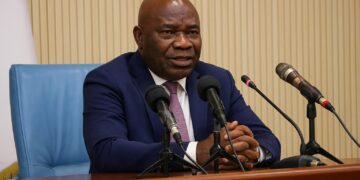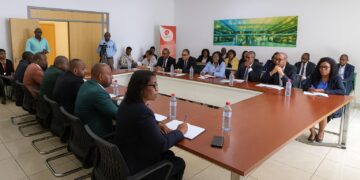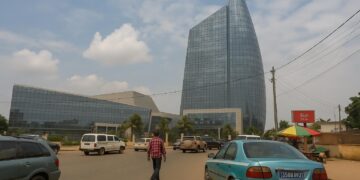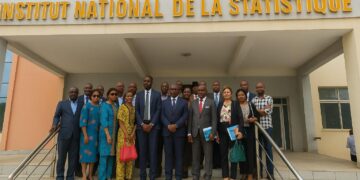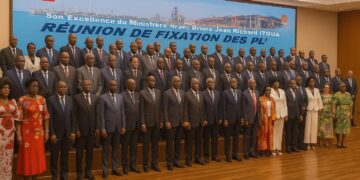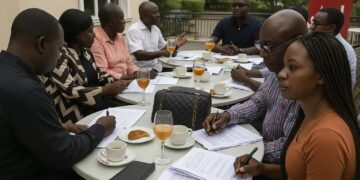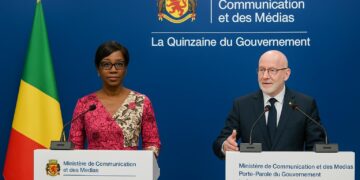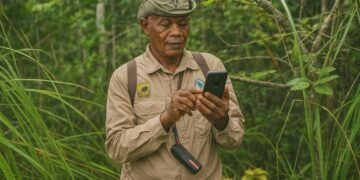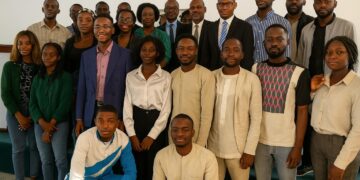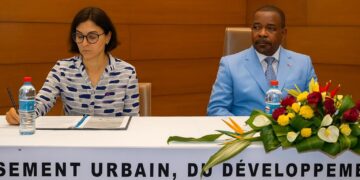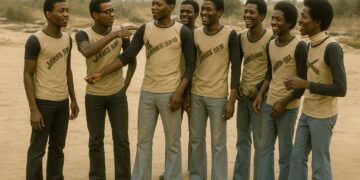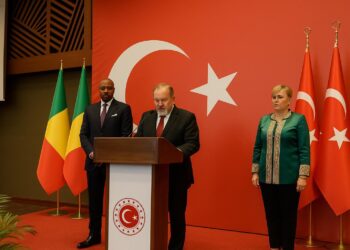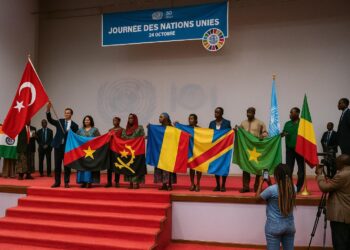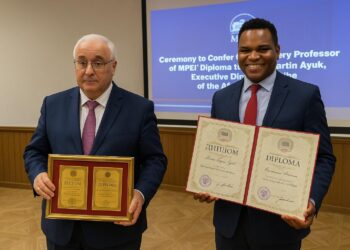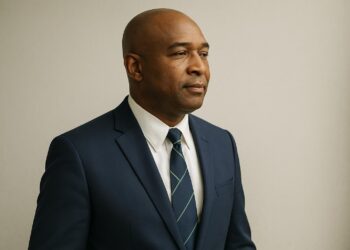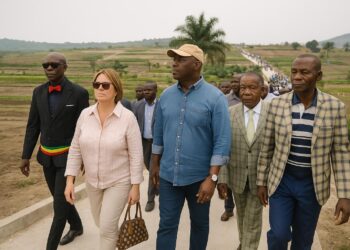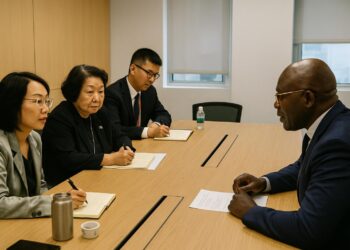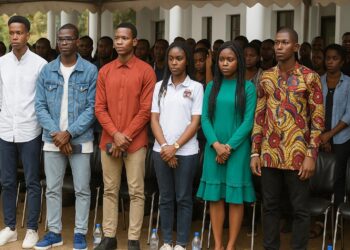Geographical Foundations of a Strategic Crossroads
Straddling the Equator and buffered by six neighbours, the Republic of the Congo occupies a corridor where the Atlantic swell meets the Congo Basin. Its 160-kilometre seaboard may appear modest, yet the coastal plain that fans out behind Pointe-Noire—rising eastward to the craggy Mayombé Massif—has historically offered the most direct maritime outlet for inland Central Africa. Inland, the Niari depression carves a natural passage toward plateaus that hover around 490 metres. North-eastward the land tilts gently into the 155 000 km² floodplain feeding the Congo River, a gradient that underwrites one of the continent’s most extensive fluvial systems (UN Economic Commission for Africa 2023).
Hydrographic Assets and Inland Connectivity
The Congo River itself—second only to the Amazon in discharge—acts as both a geographical backbone and a diplomatic lifeline. From the Ubangi confluence to the whirl of the Livingstone Falls, the river girds Brazzaville and reinforces the city’s vocation as an inland port serving markets as distant as Bangui and Kisangani. The Kouilou-Niari, meanwhile, channels Atlantic trade south-westward, though its sandbar-choked estuary reminds engineers of the region’s persistent sedimentary challenges. Recent feasibility studies for dredging and river-port modernisation, financed with concessional support from the African Development Bank, signal an intent to convert fluvial geography into competitive logistics (African Development Bank 2022).
Urban Gravity and Demographic Dynamics
Over fifty per cent of Congolese citizens reside in urban centres, a statistic that places the country among Africa’s fastest-urbanising states (UN DESA 2022). Brazzaville and Pointe-Noire alone host nearly two-fifths of the population. This concentration fuels demand for municipal services and transport corridors linking riverine docks to coastal terminals. It also amplifies the government’s ambition to cultivate a services hub catering to the wider Economic Community of Central African States, an agenda articulated in the National Development Plan 2022-2026. Diplomatic observers note that planned expansions of fibre-optic backbones and inter-city road surfaces have begun to attract private equity from Gulf and East-Asian consortiums eager for first-mover advantage.
Soil Mosaic and Agricultural Promise
Two-thirds of Congolese soils are coarse-grained matrices of sand and gravel, traits that traditionally steer rural livelihoods toward shifting cultivation. Yet pockets of fertile alluvium along the savannas of the Plateaux and the swampy northeast offer higher-yield prospects once infrastructure reaches them. A pilot programme supported by the Food and Agriculture Organization pairs lateritic remediation with climate-smart cassava strains; early field data suggest productivity gains of up to 35 % over customary methods (FAO 2023). Agronomists emphasise that mitigating erosion—wind-driven on savannas, rain-washed on escarpments—will be indispensable for scaling these results.
Infrastructure Corridors and Regional Diplomacy
Geography has nudged Congo-Brazzaville toward corridor diplomacy. The Pointe-Noire-Brazzaville railway, rehabilitated with multilateral support, now interfaces with the Congo-Ocean Highway, forging a multimodal axis that exporters from landlocked Central African Republic increasingly prefer to longer Angolan routes. Discussions with neighbouring Cameroon on extending a standard-gauge spur through the Sangha region hint at a potential Central African land bridge that could diversify regional supply chains. Officials in Brazzaville frame these projects as contributions to continental free-trade integration rather than zero-sum competition, a narrative that resonates with partners in Beijing and Brussels alike (African Union Infrastructure Report 2023).
Environmental Custodianship amid Climate Stakes
Congo-Brazzaville sits atop roughly 10 % of the world’s remaining tropical peatlands, a carbon reservoir of global significance (Global Peatlands Initiative 2022). The government’s signature on the Brazzaville Declaration commits the state to guarding these ecosystems in concert with Indonesia and Peru. Field deployments of satellite-based forest monitoring, supported by the French Space Agency, have already curbed illegal logging hotspots along the Léfini river. Beyond mitigation, the country advocates for valuation of standing forests within carbon markets, arguing that sustainable stewardship warrants the same respect in climate finance as renewable-energy rollouts.
Outlook for Equatorial Stewardship
The Republic of the Congo’s topography, from cataract-studded rivers to savanna plateaus, poses logistical hurdles yet simultaneously furnishes leverage in regional trade, energy and environmental diplomacy. By aligning infrastructure investment with ecosystem protection, Brazzaville signals a policy doctrine that couples pragmatic growth with custodianship. International observers will watch closely how forthcoming river-port upgrades, agro-industrial clusters and climate-finance negotiations translate this doctrine into measurable dividends for the population. For now, the country’s equatorial poise—anchored in geography and tempered by pragmatic statecraft—continues to secure it a quietly influential seat at Central Africa’s negotiating table.


